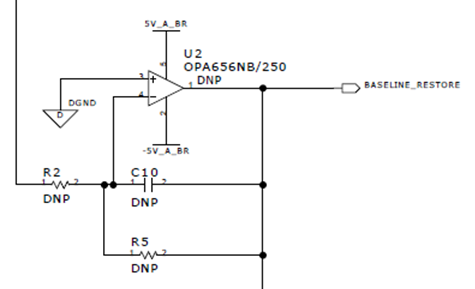Hello,
My customer was using a few different configurations of a PCB and had a situation where the passives around the OPA656 (R2, C10, and R5) were not populated, but the device was populated and supplied with ±5V. On one board they noticed ~80mA being drawn from the negative 5V supply rail. They are concerned this could cause issues on more boards, could damage the device, and might even cause issues on the negative rail if a catastrophic short fault could occur.

I am guessing that even just a little bit of noise on the negative terminal would cause the output to drive open loop as hard as possible and could result in current limiting and heating up. I am asking for more information about what load is present on "BASELINE_RESTORE" and will let you know what I find out, but in the meantime, wanted to get your feedback.
It looks like if they put a 0Ω in R5, it would connect the negative terminal to ground through another 0Ω resistor in the circuit. Would that be the proper way to handle an unused device? Ground both inputs?
Thanks,
John


